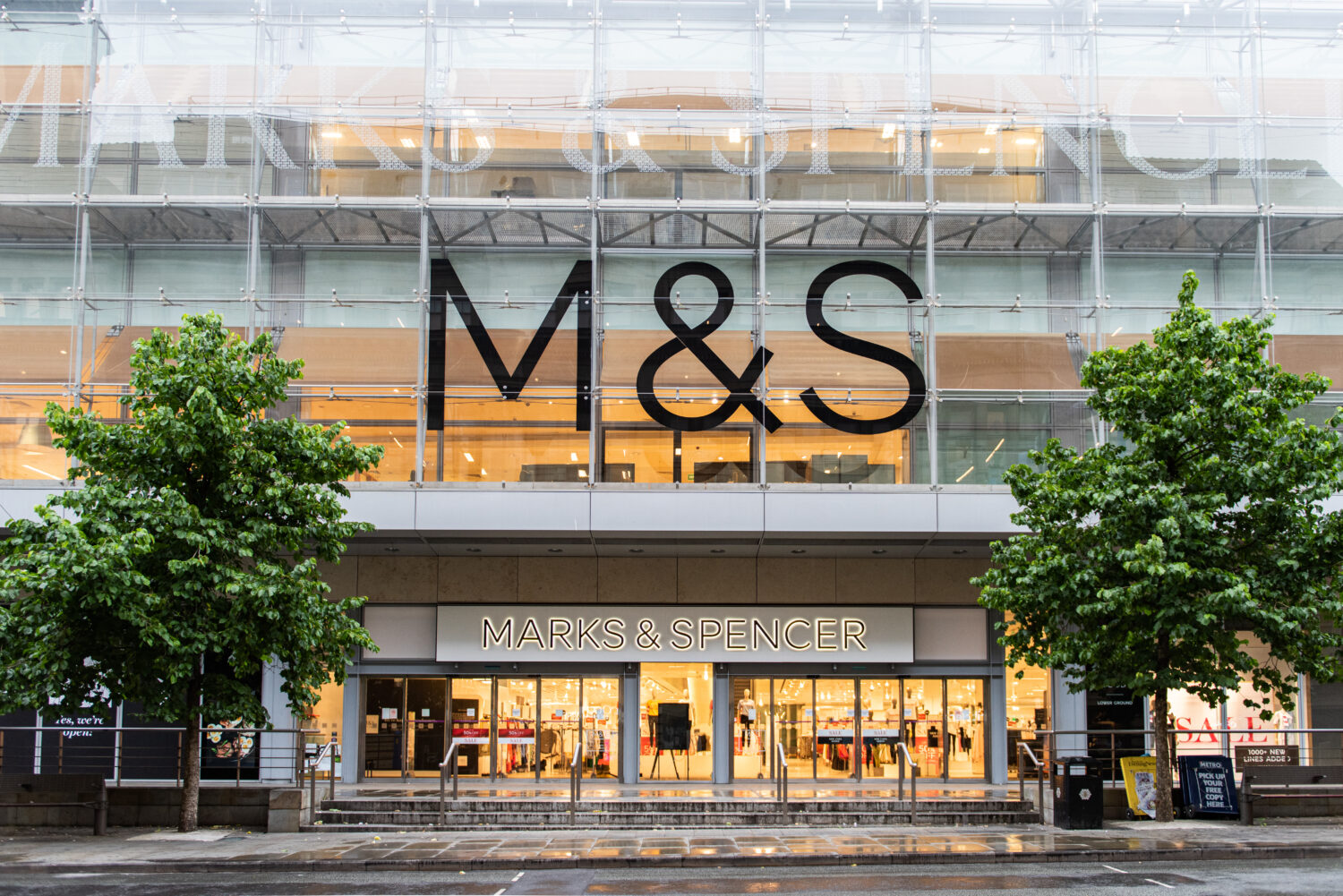The revitalisation of Marks & Spencer
Putting Snickers ahead of knickers - Pete Cargill examines how Marks & Spencer has managed to climb itself back into the FTSE 100 as other retail giants struggle against economic headwinds
Putting Snickers ahead of knickers - Pete Cargill examines how Marks & Spencer has managed to climb itself back into the FTSE 100 as other retail giants struggle against economic headwinds

The high street giant Marks & Spencer was on its uppers by the middle of 2020.
Its share price had been falling consistently for nearly five years, dropping from around £6.63 a share in May 2015 to hover around the £0.87 mark. It had also slid out of the FTSE 100 the year before after a slide in profits and was being battered on other fronts by the rise of discount retailers such as Primark. But the recent news has been that the brand has managed an almost miraculous turnaround.
It was reported at the end of August 2023 that its share price had rallied by 75% since 2019, reaching an individual price of £2.26 by the end of September. Moreover, the firm promised in August that it would restart dividend payments at the end of the year, a payment it had not made in about three years.
The news at the beginning of the year had been equally as good. It announced early on that it was creating nearly three-and-a-half thousand new jobs and, in April, said that its underlying pre-tax profits were up twenty-one per cent, with sales up 9.1 per cent.
It has been an astonishing turnaround, especially as the retail sector finds itself squeezed on all sides: by a withering demand for high-street premises, which had been the mainstay and backbone of Marks & Spencer; online shopping; and an image of having only a core demographic of older, affluent, and less-diverse shoppers.
The change in fortune, said multiple interviewees talking with The CFO, has been down to a shift in how the shopping giant views its core products.
“There have been many false dawns at Marks & Spencer,” says Nicholas Bubb, retail analyst at Hardman.
“Chairman Archie Norman was right to dampen down expectations of how easy the turnaround would be when he took over 6 years ago, but he saw that the future lay in the food business and he found the right CEO, in the form of Stuart Machin, to push through the changes needed.”
Bubb added that the strength of trading in the M&S Food business reflects the much-improved value of the product range, as well as the investment in making the stores “more exciting”. The M&S Clothing business has also been strengthened, with improved availability of brands and more modern merchandising.
“M&S has had some luck, such as with the struggles of its great rival Waitrose/John Lewis and with the timing of its push in Non-Food Online (John Lewis, by contrast, was over-exposed to the fall back in Online spending post-pandemic),” he says.
Others have a more-creative way of phrasing the behind-the-scenes moves that have made Marks & Spencer resurgent. “It’s about putting Snickers ahead of knickers,” says Richard Curry, partner at Rapleys, “rather than doing it the other way around. That’s proven to be the best way forwards for them.”
The “trick” that the firm has pulled, Curry says, is that it has worked out where its strengths lay in terms of products, while looking at the changing landscape of how people shop. It came down to a question of seeing what their customers wanted and placing those things where those customers preferred to shop.
That has meant retail parks.
Marks & Spencer announced in January that it was going to open twenty large stores, many of them away from the high street. Known as the ‘store rotation programme’, it was estimated to bring a reduction of £309 million in lease liability.
“It’s fairly obvious,” says Curry, “but Marks & Spencer has made a mark with its new markets. They’re aiming at younger people who want something in their neighbourhood, not in the town centre, in a place they either they can go to in an Uber or that will deliver to them.”
Others, such as Jonathan De Mello, founder and chief executive of JDM Retail, point to an overhaul of its core product lines.
“There have been improvements in design,” he says, “and there’s been some interesting collaborations. That’s brought a lot of younger customers in. All of this helps. And what’s more, the focus on retail warehouse parks means that they’re making more from the lower rents. They’re generating high revenue per square foot rented, making them more profitable.”
But when talking about the firm rising from the ashes, those who spoke to The CFO returned to the overhaul in management that occurred from 2016 onwards.
“There’s good leadership in there,” says Curry. “They’ve set up and reengineered their inhouse team to focus on property acquisition, which is what they needed to do. They needed to not only cut down the tree, but plant a new one. And they’ve been good at promotion, too.”
That is a thought taken up by De Mello. “The CEO is active on social media,” he says. “That’s done him a favour because everyone thinks he’s great. His co-CEO, on the other hand, works behind the scenes and chooses not to speak publicly. It’s a partnership that works well together.”
As for CFOs, he says that in a change like this, this role remains key.
“Whenever a business looks to change its strategy, the CFO has to sign off on it. They’ll be looking at whether opening x number of stores in retail parks is the right thing to do,” says De Mell.
“There’s a lot of profit-and-loss modelling, alongside understanding customer needs and how many of them there are. The transition needs to be costed, too, alongside the costs of branding and marketing. These are things that the CFO has to be all over.”